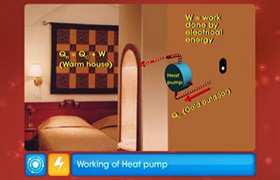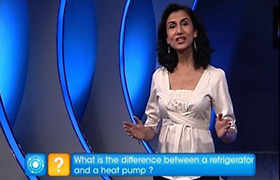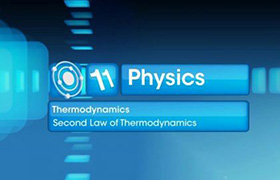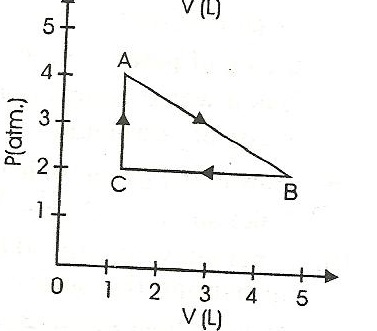CBSE Class 11-science Answered
Answer the following questions :
(i) A piece of iron is hammered. Does the internal energy of the iron increase? Does the heat enter the piece of the iron from outside?
(ii) A hot piece of lead is immersed in cold water. Has the internal energy of the water increased? Has any work been done by the lead?
(iii) Why are the brake-drums of a car heated when the car moves down a hill at constant speed?
(iv) Two balls of the same metal having masses 10g and 20g collide with a target with the same velocity. If the total energy is used in heating the balls, which ball will attain higher temperature?
(v) An ideal gas is compressed at a constant temperature. Will its internal energy increase or decrease?
(vi) How can the internal energy of an ideal gas be changed?
Asked by Topperlearning User | 04 Jun, 2014, 13:23: PM
(i) Yes. the internal energy increases. No. the heat does not enter the piece of iron from outside.
(ii) Yes. the increase in the internal energy is due to the transfer of heat and not due to any work.
(iii) Since the speed of the car is not increasing, the gravitational potential energy is converted into internal energy of the system (brake-drums) which gets heated.
(iv) The rise in temperature will be same for both the balls.
(v) Because the internal energy of an ideal gas depends only temperature, the internal energy remains the same.
(vi) The internal energy of an ideal gas can altered by compressing or by adiabatic expansion.
Answered by | 04 Jun, 2014, 15:23: PM
Concept Videos
CBSE 11-science - Physics
Asked by bbabichowdary | 02 Sep, 2020, 13:25: PM
CBSE 11-science - Physics
Asked by Topperlearning User | 04 Jun, 2014, 13:23: PM
CBSE 11-science - Physics
Asked by Topperlearning User | 17 Apr, 2015, 14:29: PM
CBSE 11-science - Physics
Asked by Topperlearning User | 17 Apr, 2015, 16:46: PM
CBSE 11-science - Physics
Asked by Topperlearning User | 04 Jun, 2014, 13:23: PM
CBSE 11-science - Physics
Asked by Topperlearning User | 04 Jun, 2014, 13:23: PM
CBSE 11-science - Physics
Asked by Topperlearning User | 04 Jun, 2014, 13:23: PM
CBSE 11-science - Physics
Asked by Topperlearning User | 04 Jun, 2014, 13:23: PM
CBSE 11-science - Physics
Asked by Topperlearning User | 04 Jun, 2014, 13:23: PM
CBSE 11-science - Physics
Asked by Topperlearning User | 17 Apr, 2015, 16:54: PM





